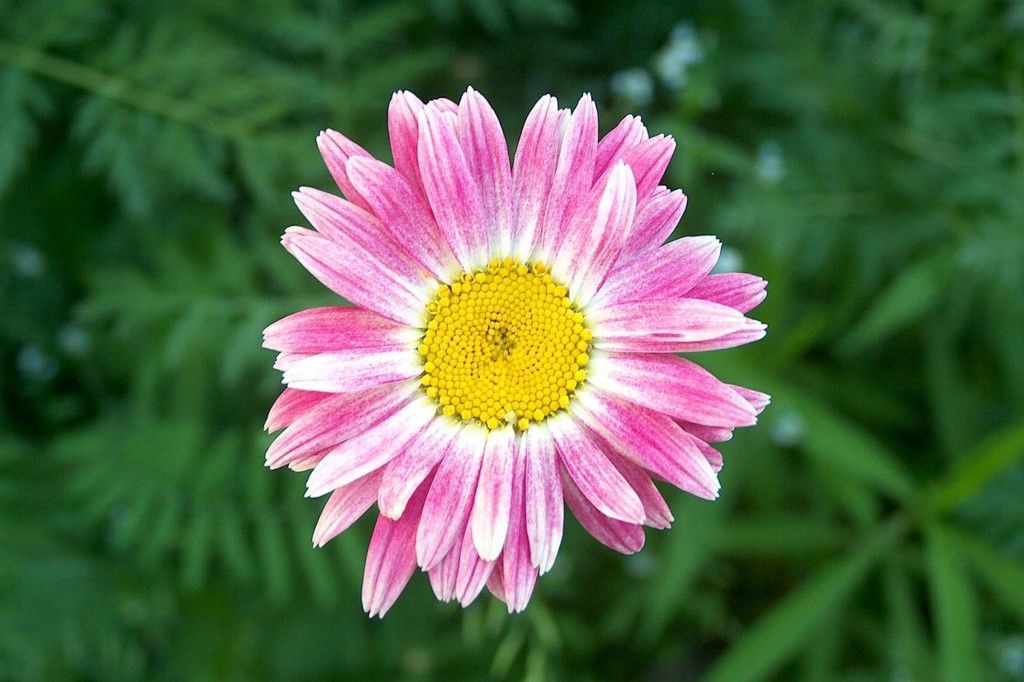By the end of the 1800s, most types of chrysathemums had arrived in America.
In the 1880s Luther Burbank in California used a mix of native and foreign species to develop the shasta daisy. Its Latin names were Chrysanthemum superbum and Chrysanthemum maximum.
One Japanese variety was named “Mrs. Alpheus Hardy,” and it came from a Japanese student who a Mrs. Hardy befriended while he was studying in America. It is a large white mum with delicate curved petals. Burbank’s shastas were more hardy and would grow in any soil.
Another strain, the Pyrethrum daisy, has insecticidal properties from which insecticide was developed. It is said to be safe in terms of ecological and environmental effects but is toxic to adult mosquitoes. This mum, Chrysanthemum cinerariifolium, was brought here from Dalmatia, and our pink-painted daisy is one of its descendants.
Another import to the US from Europe was Chrysanthemum parthenium, commonly known as feverfew. It had been used medicinally for centuries for a variety of ailments including migraines. The tiny white feverfew daisy mum is an easy-care, self-seeding plant that still thrives in home gardens.
This is Moya Andrews, and today we focused on new world mums.










